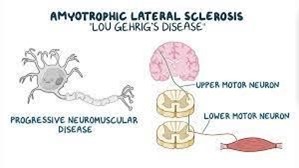A nurse is caring for a 9-month-old infant in a pediatric clinic. The child's guardian tells the nurse that the child has missed the scheduled 6-month immunizations. Which of the following responses should the nurse make?
"We can give your child all of the missed immunizations in one injection."
"Your child will have to start their immunization series over from the beginning."
"We will administer the immunizations your child missed today."
"We will give your child all of the needed immunizations at 12 months."
The Correct Answer is C
Choice A rationale:
Administering all the missed immunizations in one injection is not recommended and can lead to increased discomfort and potential adverse reactions.
Choice B rationale:
Starting the immunization series over is unnecessary and can delay the child's protection against vaccine-preventable diseases.
Choice C rationale:
The most appropriate action is to administer the immunizations the child missed at the earliest opportunity to catch up on the schedule.
Choice D rationale:
Waiting until 12 months of age is not necessary if the child has already missed scheduled immunizations. The catch-up schedule should be followed based on the child's current age.
Nursing Test Bank
Naxlex Comprehensive Predictor Exams
Related Questions
Correct Answer is A
Explanation
Choice A rationale:
Elevating the head of the bed can help prevent intracranial pressure by promoting venous drainage from the head.
Choice B rationale:
Premature newborns need to rest and conserve energy, so excessive stimulation every 2 hours is not recommended.
Choice C rationale:
Placing the newborn in a radiant warmer helps maintain a stable body temperature, but it does not directly address intracranial pressure.
Choice D rationale:
Administering hypertonic solution is not a standard intervention for decreasing intracranial pressure in a premature newborn.
Correct Answer is C
Explanation
Choice A rationale:
Wearing splints over affected joints while sleeping is a strategy to prevent contractures, which are common in ALS.
Choice B rationale:
Dexamethasone is not used to treat muscle atrophy in ALS.
Choice C rationale:
As ALS progresses, clients may lose the ability to control their respiratory muscles, and a machine such as a ventilator may be required to assist with breathing.
Choice D rationale:
Nutrition through a central venous access device is not a standard intervention for ALS, as the focus is on preserving the client's ability to eat and swallow for as long as possible.

Whether you are a student looking to ace your exams or a practicing nurse seeking to enhance your expertise , our nursing education contents will empower you with the confidence and competence to make a difference in the lives of patients and become a respected leader in the healthcare field.
Visit Naxlex, invest in your future and unlock endless possibilities with our unparalleled nursing education contents today
Report Wrong Answer on the Current Question
Do you disagree with the answer? If yes, what is your expected answer? Explain.
Kindly be descriptive with the issue you are facing.
